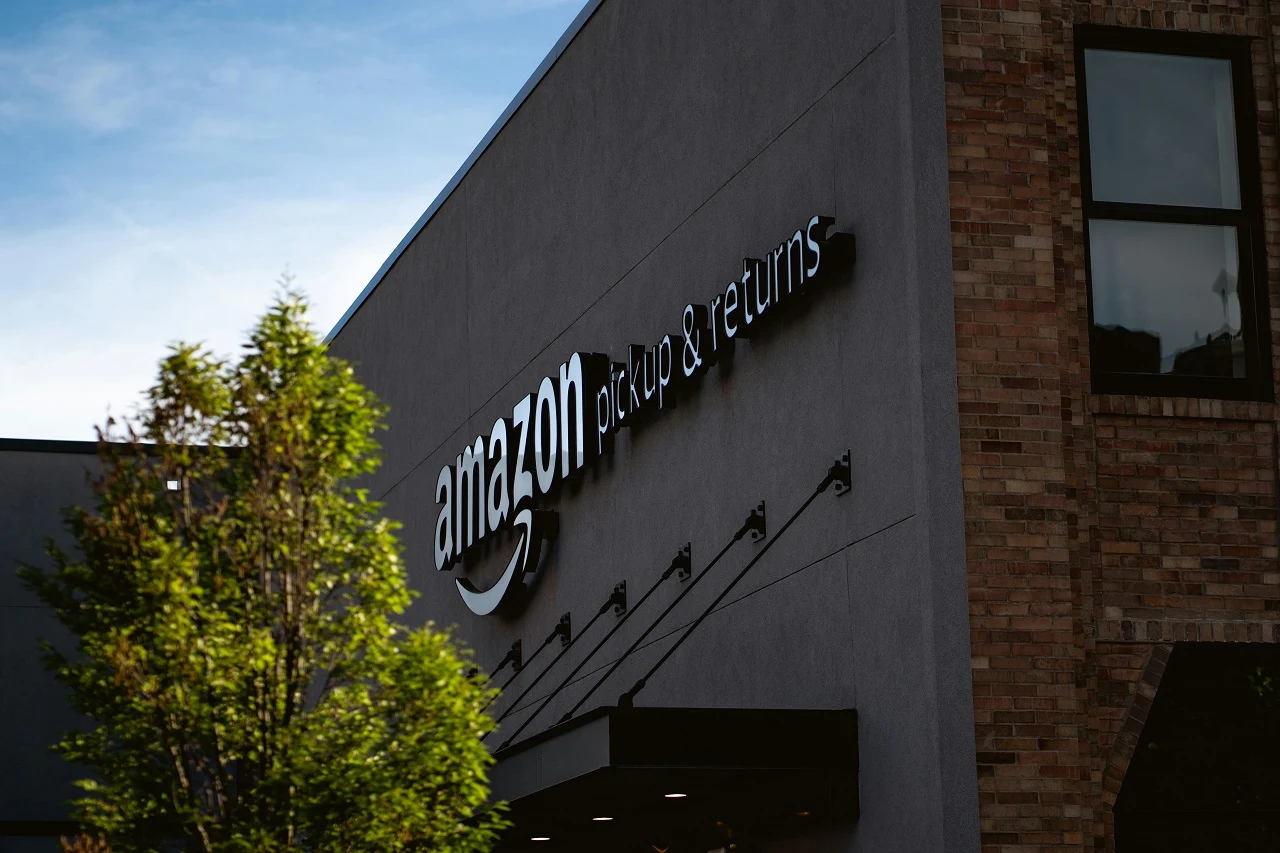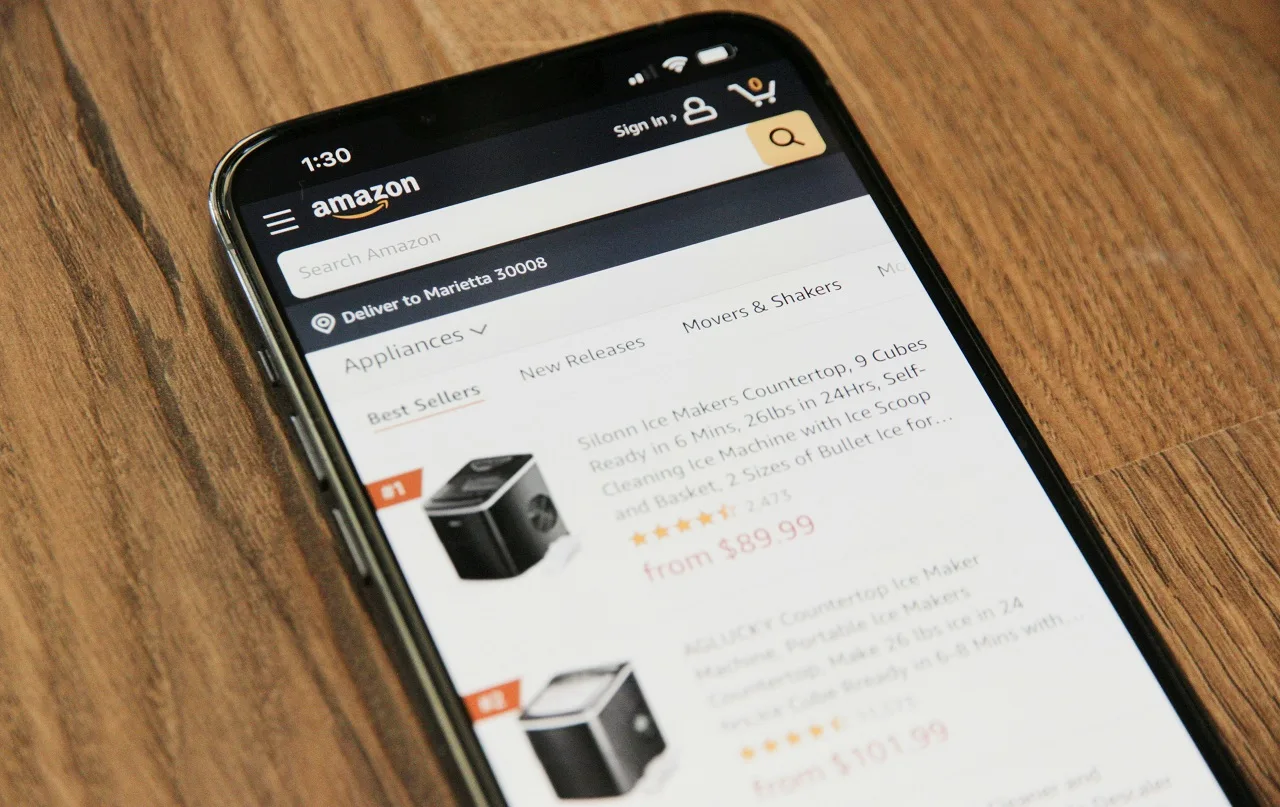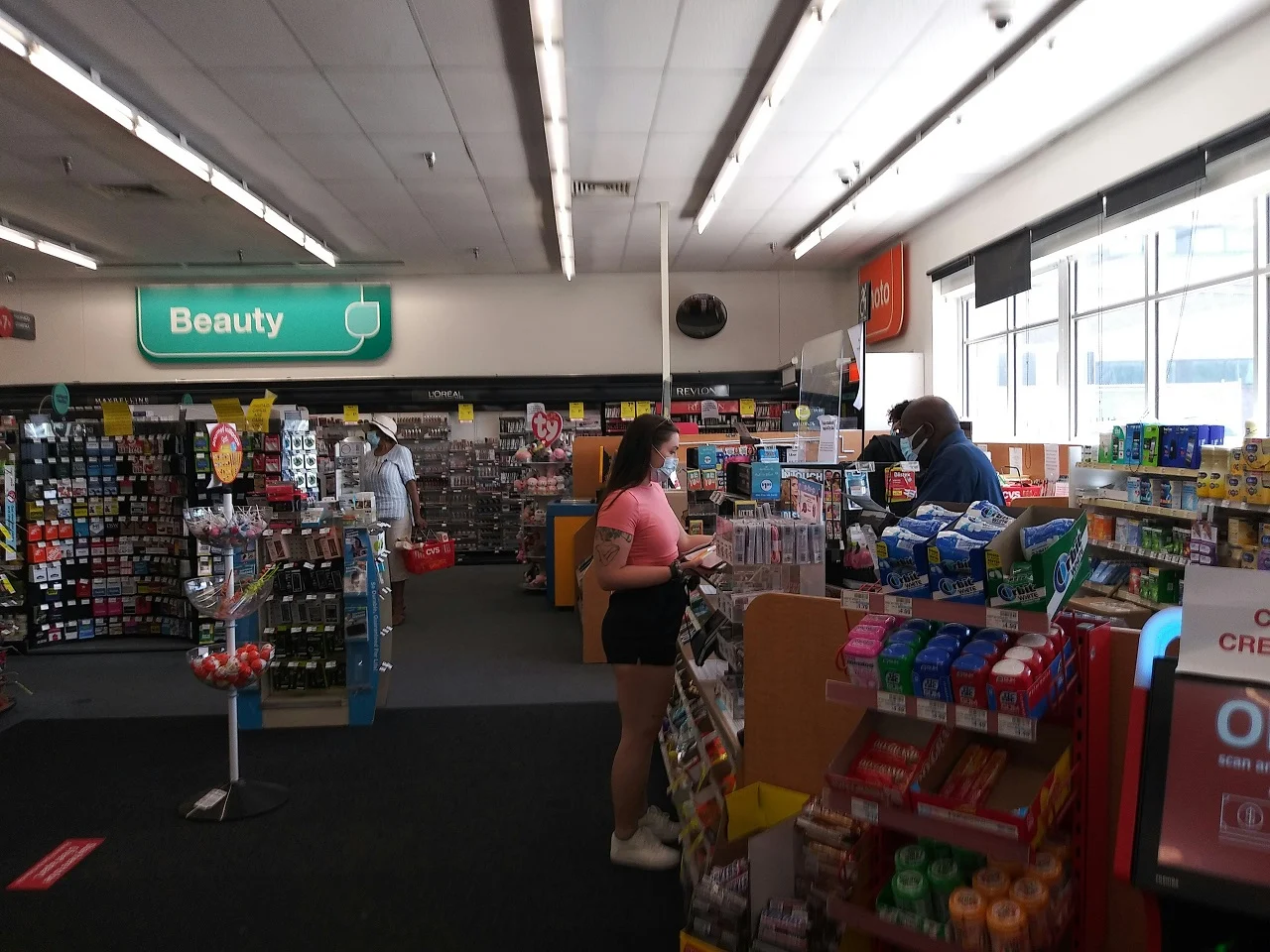
Ever walked into a store and felt like you were on the brink of discovering some buried treasure? That's what you feel when you enter an Amazon return store. The retail stores have been popping up everywhere, and they're changing how value shoppers think about finding deals.
What's the Deal about Amazon Return Stores?
So what in the world is an Amazon return store? Short answer: They are physical stores that sell lowered price returned Amazon items. When customers return items to Amazon, sometimes the company finds it more economical to sell these returns in bulk to liquidators rather than process each individually.
These liquidators then sell the products to Amazon return stores, which sell the products to consumers at prices that'll make your wallet sing with joy. We're talking 30% to 80% off retail prices. Not too bad, huh?
The concept isn't new, of course, but it's got seriously trendy over the past several years. While online shopping hit an all-time high (in large part due to our pandemic shopping binge), the volume of returns has surged exponentially. That created the perfect storm for Amazon return stores to thrive.
The Treasure Hunt Experience
Amazon Return Store near me
Going into an Amazon return store is nothing like your typical retail experience. Forget about neatly organized departments and predictable inventory. These stores are more like treasure hunts – you never know what you'll find.
One day you'll be scoring a brand new, top-of-the-line coffee machine for pennies on the dollar of what it would have originally cost you. Another day, designer clothing with price stickers still on or children's playthings that usually cost you an arm and a leg. Frankly, half the fun is in not knowing what you're going to find.
Most of these stores sort inventory by cost, not product category. Others operate on a "bin day" system where new inventory arrives on particular days, usually at a premium price. Prices drop during the week until the bins are exhausted and replenished.
Sarah, a regular shopper at her Ohio Amazon return store, said: "I found my son's birthday present – a $80 LEGO set – for $25. It was sealed and perfect. I've been hooked ever since."
Who's Shopping at Amazon Return Stores?
The customers in these stores are more varied than you'd imagine. You'll find:
- Families struggling to make ends meet
- Students on tight budgets
- Thrifters on the lookout for deals
- Resellers looking for products to resell online
- DIYers looking for project materials
- Gift shoppers looking for unique items at discounted prices
- Eco-warriors who love giving returned items a second life
The common thread? Bargain hunting and the thrill of the hunt.

The Good, The Bad, The Slightly Weird
Like any shopping experience, there are the good and bad about Amazon return stores. Let's review them.
The Good Stuff
The prices, of course! Where else do you always get 50% or better off on everything from kitchen appliances to electronics? For bargains shoppers, these stores are a gold mine.
And consider the environmental component. Every product purchased at a return store is one less that might end up in a landfill. In today's more ecologically conscious society, that's something to take pride in.
And don't forget the excitement. Brick-and-mortar retailing can be a sleep-inducer, but Amazon return stores bring back the joy of discovery. You might find something you didn't know you needed but can't live without right away.
The Not-So-Good Parts
Quality is occasionally patchy. Although the majority of items are in great shape (usually simply returned because the purchaser changed their mind), some might be broken or have missing parts. Be sure to examine everything carefully before you purchase.
Return policies in these shops are strict – several are "all sales final." After all, these are already returns.
The stock is random. If you're searching for something in particular, you may have to go several times before you find it – if you find it at all.
Tips for Making the Most of Your Amazon Return Store Adventure
Want to increase your odds of scoring great bargains? Here are some insider secrets:
Find out the store's restocking schedule. New stock usually arrives on specific days, so shopping shortly after a restocking leaves you with the first pick at the freshest selection.
Shop at your own pace. Unlike conventional retail where you might have a specific place in mind, these kinds of stores require patience and full exploration.
Examine electronics and appliances thoroughly. Plug them in and test them out if possible in the store.
Look for items with original packaging still intact – they're more likely to be returns for buyer's remorse than for fault.
Take a friend with you. Two pairs of eyes are better than one when it comes to spotting secret treasures, and you can explore more ground together.
Real People, Real Finds
What is so addictive about these stores are the stories of unbelievable deals. Mike of Texas purchased a high-end espresso machine for $600 for $175. "It had a very small scratch on the side that you can hardly see," he stated. "Works like a charm!"
Three-mom Jenny decked out her children's bedrooms almost entirely through Amazon return store gems. "I've found everything from a study desk to a bunk bed for less than half price. My kids say I'm some kind of shopping magician," she joked.
Is It Worth Checking Out?
If you have never been to an Amazon return store, you may wonder whether it's worth the time. The answer actually does depend on what kind of shopper you are.
If you enjoy the hunt and don't mind surprises, then you will probably love these stores. They're perfect for shoppers who enjoy bargains and surprises.
But if you enjoy having predictable shopping experiences where you know exactly what you're going to get, the chaotic layout of these stores might not be your thing.
Either way, it's at least worth one visit. You might end up leaving with a fantastic deal on something you've been eyeing for months. Or you might discover something totally unexpected that turns into your new favorite thing.
In a world of increasingly digital and impersonal shopping experiences, Amazon return stores offer something wonderfully unique – the joy of discovery, the thrill of the bargain, and the delight of giving beautiful things a second life.
So the next time you're driving by one, why not pop in? Your next great bargain might be just beyond the door.

Frequently Asked Questions About Amazon Return Stores
Where do Amazon returns get resold?
Amazon returns are sold back through various channels. Most returns are sold in bulk to liquidation firms, which then resell them to Amazon return shops, bin stores, and liquidation retailers nationwide. Others are also sold through online liquidation sites such as Liquidation.com, BULQ, and B-Stock. Others are also resold by Amazon itself through Amazon Warehouse Deals and its subsidiary Woot.com at discounted "open-box" prices directly to consumers.
Do they sell Amazon returns?
Yes, Amazon returns are certainly resold and not discarded. Amazon has created a highly developed reverse logistics system to manage returns effectively. The majority of returned items in good condition are resold either directly by Amazon's own channels or by third-party liquidators. Only products that cannot be resold because they are heavily damaged or pose health/safety issues are recycled or disposed of under proper regulations.
Where do Amazon return stores obtain their goods?
Amazon return stores source their inventory by purchasing pallets or truckloads of returned goods from liquidation intermediaries who in turn purchase directly from Amazon. These types of stores tend to bid on mixed pallets without always knowing what they are going to receive. Some larger operations may even have some direct relationships with Amazon's liquidation department, but most, particularly the smaller operations, purchase through intermediary liquidation companies like B-Stock, Liquidation.com, or Direct Liquidation.
Are Amazon return store products damaged?
The condition of merchandise in Amazon return stores is highly variable. Much of the merchandise is brand new, unused, and was merely returned for buyer's remorse or ordering errors. Some will have minor cosmetic damage, missing parts, or opened packaging. Some stores grade and test their inventory, and some sell merchandise "as-is" with no guarantee. Few stores will take returns, so it's best to examine items carefully before purchasing, especially electronics or higher-priced merchandise.
Which days do Amazon return stores restock?
Store restocking schedules are different, but a good number of Amazon return stores have a weekly schedule. Most "bin stores" tend to restock Fridays or Saturdays, with a new pricing cycle beginning the day of restock with the highest prices. Independent stores tend to have an independent schedule depending on when they get the liquidation shipments. The easiest way to find out their particular restocking schedule is to follow your local store's social media pages, as some do post when new stock comes in to build anticipation.
How much discount do you receive at Amazon return stores?
Return Amazon store discounts typically fall between 30% and 80% off the original price. The exact discount depends on several variables: the store's pricing strategy, the condition of the item, and sometimes how long the item has been in stock. Bin stores typically have a tiered pricing strategy where prices decrease during the week, beginning higher on restock days (perhaps 30-40% off) and concluding with deep discounts (perhaps 70-80% off) before the next restock.
Is it profitable to purchase Amazon returns?
Buying Amazon returns can be profitable for resellers but is risky. Success relies on a number of factors such as purchase price, condition of the item, and resale market. Seasoned resellers usually seek brand-name products in good condition that hold high resale value. The wild card of liquidation purchases is that sometimes you'll find good merchandise at a steep discount, and sometimes the merchandise will be defective to limit profitability. Successful resellers become skilled at testing, repairing, and listing correctly to get maximum returns.
What happens to Amazon returns that are not resold?
Amazon returns that are not resellable through normal channels may be:
- Donated to charities
- Sold to specialty recyclers who salvage usable parts
- Recycled by Amazon's electronics and other material recycling initiatives
- Destroyed in some cases if the products are not safe to reuse or recycle Amazon has been criticized in the past for stock destruction and has since implemented measures like the Amazon Sustainability Program to reduce waste and get more of the returns through to new outlets.
Absolutely! Here's your FAQ-style content based on what real people—price-sensitive shoppers, deal seekers, lower to middle-income families—would actually Google about Amazon return stores.
📦 Amazon Return Store FAQ for Budget-Conscious Shoppers
1. Are Amazon return stores legit or a scam?
Yes, they’re legit. Amazon return stores resell items that were returned to Amazon, often at deeply discounted prices. They’re typically run by third-party businesses, not Amazon itself.
2. How do Amazon return stores work?
These stores buy returned Amazon items in bulk (called pallets), then sell them individually. Prices usually drop throughout the week, especially at bin stores with daily pricing models.
3. Is it safe to buy electronics from an Amazon return store?
It's a gamble. Some electronics are in perfect shape, others might be damaged or missing parts. Always test in-store if allowed and avoid high-risk buys without return options.
4. Do Amazon return stores test the products before selling?
Not usually. Most stores sell items as-is with no testing, especially in bin-style formats. Some premium stores may inspect items, but it varies by location.
5. What are the best days to shop at an Amazon return store?
Restock days (usually Fridays or Saturdays) are best for selection. Midweek (e.g. Wednesdays) may have the lowest prices, but leftover inventory.
6. What kind of stuff can you find in Amazon return stores?
Anything from tech gadgets, tools, kitchen items, toys, home decor, to clothing and pet supplies. It's a mix — every visit is different.
7. Can you return stuff you buy at an Amazon return store?
Usually not. Most are final sale. A few stores may allow exchanges or give store credit if something is clearly defective.
8. How much cheaper are Amazon return stores vs regular Amazon?
Items can be 30–90% off retail prices. Bin stores often sell items for $7 or less, depending on the day.
9. Any tips for finding hidden gems at Amazon return stores?
- Show up early on restock days
- Bring a flashlight to inspect items
- Use your phone to Google or scan barcodes
- Wear gloves (bins can get messy!)
- Don’t overlook sealed or unbranded items — they could be valuable
10. Why do people shop at Amazon return stores?
To save big, score unexpected finds, or resell items for profit. Many shoppers enjoy the “treasure hunt” feel.
11. How do I find an Amazon return store near me?
Search Google Maps for terms like "Amazon bin store", "Amazon return store", or "liquidation store near me". Check local Facebook groups too.
12. Are Amazon return pallets worth it for families?
They can be — if you’re okay with surprises. Some pallets include useful household items, while others might have junk or broken goods. Great for DIYers or bargain hunters.
13. Do Amazon return stores have kids’ stuff or baby products?
Yes, often! You’ll find baby monitors, bottles, toys, clothes, and more — but always check expiration dates on anything consumable.
14. How to tell if something is broken in an Amazon return bin?
Inspect packaging, check for missing cords or damage, and test if possible. If it looks resealed or opened, be cautious.
15. Are there warranties on items from Amazon return stores?
Nope. Most items have no warranty, and original manufacturer warranties are usually void due to resale.
16. Do they restock Amazon return stores every day?
Some do, but most have weekly restocks with daily price drops. Ask the staff for their schedule.
17. Why are some Amazon return stores more expensive than others?
Pricing depends on location, store size, and whether they’re bin-style or more curated. Some charge more but offer tested items or better selection.
18. How do I know if the deal is good at an Amazon return store?
Use your phone to compare prices on Amazon, eBay, or Google Shopping. Be sure the item is complete, undamaged, and not expired.
19. Is everything in Amazon return stores used?
Not necessarily. Items may be open-box, unused, damaged, or brand new. You never really know until you inspect them.
20. What happens if I buy a fake or broken item from a return store?
Unfortunately, you’re usually stuck with it. Return stores sell "as-is" and typically don’t guarantee authenticity or function. Shop carefully.

MOe
Crafting engaging narratives that spotlight the unique shopping experience of bin stores.